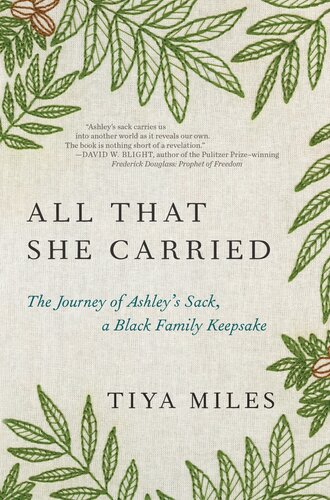

Most ebook files are in PDF format, so you can easily read them using various software such as Foxit Reader or directly on the Google Chrome browser.
Some ebook files are released by publishers in other formats such as .awz, .mobi, .epub, .fb2, etc. You may need to install specific software to read these formats on mobile/PC, such as Calibre.
Please read the tutorial at this link: https://ebookbell.com/faq
We offer FREE conversion to the popular formats you request; however, this may take some time. Therefore, right after payment, please email us, and we will try to provide the service as quickly as possible.
For some exceptional file formats or broken links (if any), please refrain from opening any disputes. Instead, email us first, and we will try to assist within a maximum of 6 hours.
EbookBell Team

5.0
78 reviewsA renowned historian traces the life of a single object handed down through three generations of Black women to craft an extraordinary testament to people who are left out of the archives.
"Deeply layered and insightful . . . [a] bold reflection on American history, African American resilience, and the human capacity for love and perseverance in the face of soul-crushing madness.” — The Washington Post
“A history told with brilliance and tenderness and fearlessness.” — Jill Lepore,
In 1850s South Carolina, an enslaved woman named Rose faced a crisis, the imminent sale of her daughter Ashley. Thinking quickly, she packed a cotton bag with a few precious items as a token of love and to try to ensure Ashley’s survival. Soon after, the nine-year-old girl was separated from her mother and sold. Decades later, Ashley’s granddaughter Ruth embroidered this family history on the bag in spare yet haunting language—including Rose’s wish that “It be filled with my Love always.” Ruth’s sewn words, the reason we remember Ashley’s sack today, evoke a sweeping family story of loss and of love passed down through generations.
Now, in this illuminating, deeply moving book inspired by Rose’s gift to Ashley, historian Tiya Miles carefully unearths these women’s faint presence in archival records to follow the paths of their lives — and the lives of so many women like them — to write a singular and revelatory history of the experience of slavery, and the uncertain freedom afterward, in the United States. The search to uncover this history is part of the story itself. For where the historical record falls short of capturing Rose’s, Ashley’s, and Ruth’s full lives, Miles turns to objects and to art as equally important sources, assembling a chorus of women’s and families’ stories and critiquing the scant archives that for deca